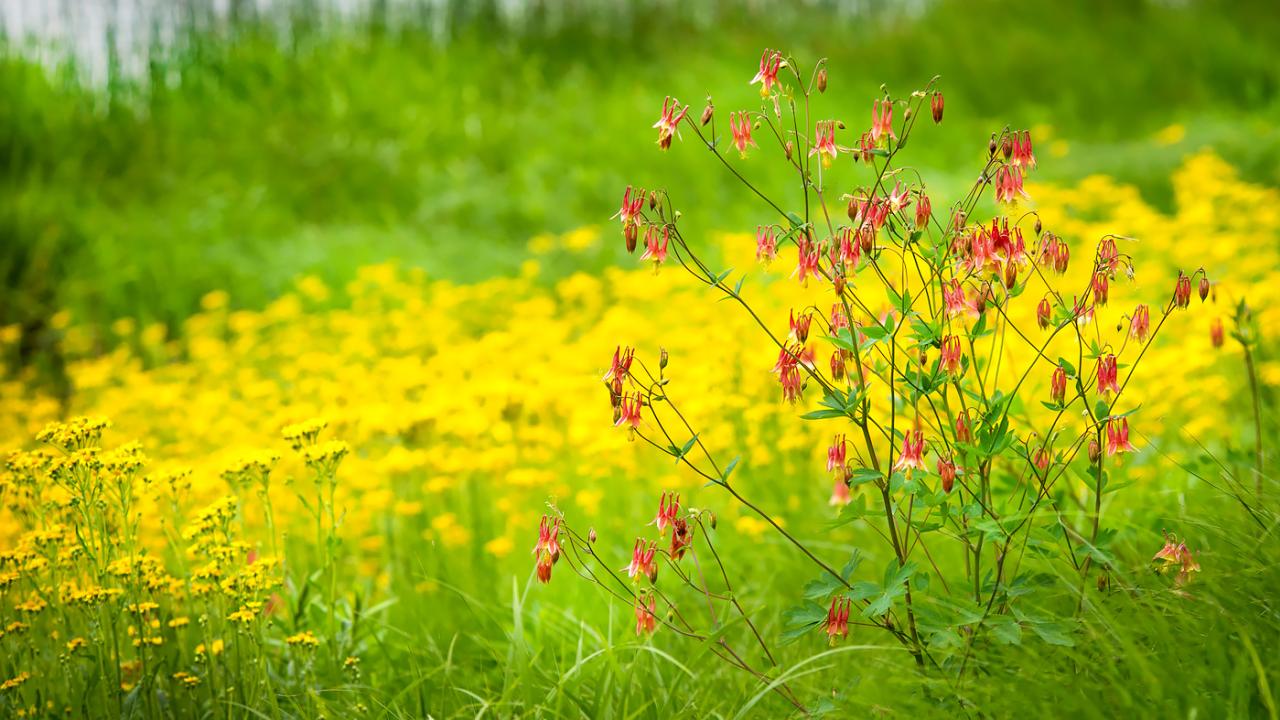

Plant Science &
Conservation
Garden Stories
Saving iconic Joshua trees
In the dry Mojave Desert, we think it’s a lovely sight when a tiny blade of a baby Joshua tree nudges up from the soil—but, to be honest, we’re a little proprietary about it. As Chicago Botanic Garden interns, we plant Joshua tree seedlings in the wild and help them flourish.
Based in Boulder City, Nevada, we’re working to save Joshua trees, one plant at a time. Through the Garden’s Conservation and Land Management (CLM) program, we’re part of the U.S. Geological Survey’s Joshua Tree Genome Project team. The National Science Foundation-funded project studies how Joshua trees are responding to climate change.

Earlier this year, we worked with a team of researchers to germinate, track, and tend to Joshua tree seeds before planting them in designated areas across the Mojave Desert. Lately, we’ve been monitoring the saplings—whether new blades are growing, which plants are heat stressed (with leaf margins furled inward), and whether there are signs of insect and rodent damage.
The work comes at a critical time for Joshua trees, iconic plants of the Southwest. Joshua trees provide habitat and food for a host of animals; the plants are an essential part of the Mojave Desert ecosystem. But drought and soaring temperatures—up to 130 degrees Fahrenheit—have taken a toll, and in 2020, a wildfire in the eastern Mojave Desert destroyed about 1.3 million Joshua trees.
Sometimes it can be hard to stay optimistic for the future of Joshua trees. We’ve been seeing established trees—hundreds of years old and well over 15 feet tall—struggling from the drought. So these young Joshua trees we planted will have to persevere through so much—mainly the lack of rain/drought stress and insect and animal damage—in order to survive. But we hope that this project can help save them.
Planting days were long and intense. We’d pack a pickup truck with pitchforks to clear the dusty roads of tumbleweeds, along with a firefighter’s hose and 500-gallon water tank to water the seedlings. We started by rolling out transect tapes to mark out as straight of lines as possible. We’ve learned that the straighter the lines, the easier it is to monitor the plots.
With a team of about a dozen people, we planted seedlings using noisy augers (and turquoise ear plugs!) and shovels. At the end of the day, we had sore arms, tired backs, and achy knees. Sometimes, we camped under the stars so we didn't have to drive back to our home base; we’d fall asleep to the gentle hoo-hoo-ing of owls.
It’s very strange for us to imagine that the little seedlings we planted could turn into the 100-plus-year-old trees that we see out in the Mojave. In the greenhouse, we saw them come up from the soil as just a tiny, flimsy blade. Then we saw that each tiny seedling appeared above the soil in the desert and were in awe that they survived. They could have easily been trampled or eaten, or not have had enough resources. To imagine these tiny seedlings turning into huge trees is inspiring.
In one week, our team planted about 1,600 Joshua tree seedlings.
How do we feel about that?
Bridget: This project brings about many mixed emotions. It is unsettling to learn about and witness the immediate effects of climate change on the ecosystem, and feel powerless to stop it on an individual level. However, I feel hopeful knowing that this research could change policy and inform the public—and hopefully, even more Joshua trees will be saved.
Maddy: It takes good ol’-fashioned manual labor and teamwork to get a big project done! Working side by side in the soil and getting to talk about life and our backgrounds that led us to the environmental science field was a lot of fun too, and I’m glad we got the chance to work together on such an important project that we all care so much about.
Conservation and Land Management (CLM) interns are early career scientists. During their five-month paid internships, they work on land management and conservation projects, mostly in the western U.S., where the majority of public land lies. Our federal partners include the U.S. Bureau of Land Management, National Park Service, and USDA Forest Service.
About the interns
Madeline Czymmek
Maddy graduated from Cornell University in 2021 with a bachelor’s degree in Environment and Sustainability. After graduation, she spent the summer working in Alaska as a botany technician for the National Ecological Observatory Network, based in Fairbanks. When her internship ends, she will head to Idaho Falls to work as an aquatic monitoring technician. Maddy grew up in upstate New York and had never been to the Southwest before starting this internship, so she not only enjoyed learning about Joshua trees and the Mojave Desert but also exploring the region’s natural areas with Bridget.
Bridget Hennessy
Bridget graduated from the University of Michigan in 2019 with a bachelor’s degree in Ecology and Evolutionary Biology. After graduation, she worked as a pharmacological research assistant for a year before returning to environmental work. This past summer she worked as a prairie restoration technician in North Dakota, where she collected data on native and invasive plant communities. After her internship, she will work for the Wisconsin Department of Natural Resources doing forestry research. She has really enjoyed this internship, and is thankful to have had the opportunity to learn the species of the Mojave Desert and how climate change is affecting them.
https://www.clminternship.org/
Photos by Madeline Czymmek and Bridget Hennessy

